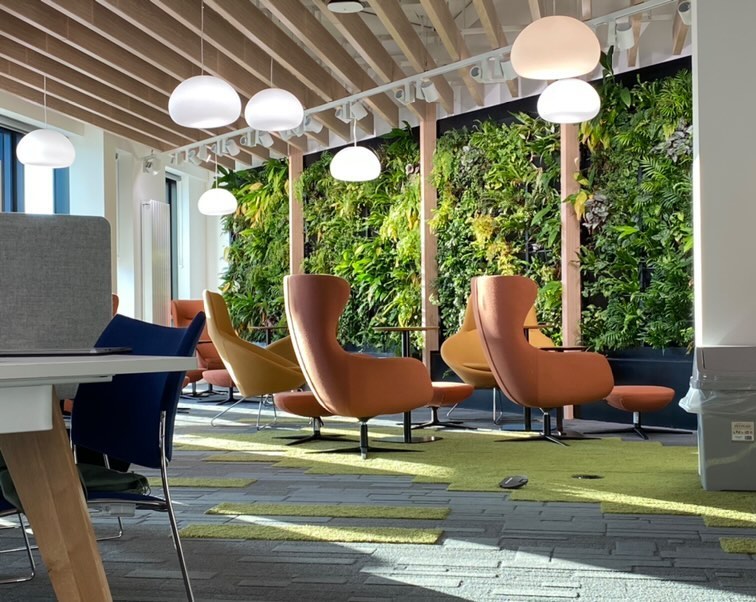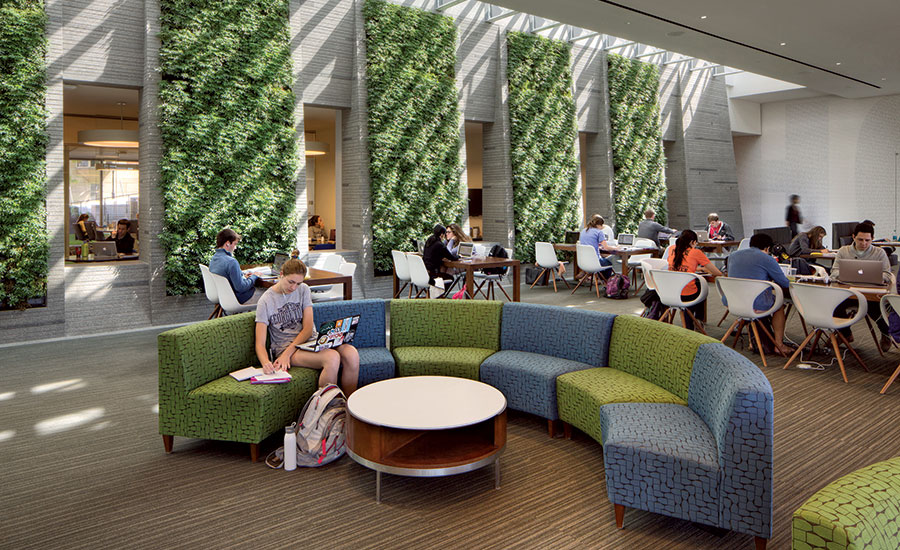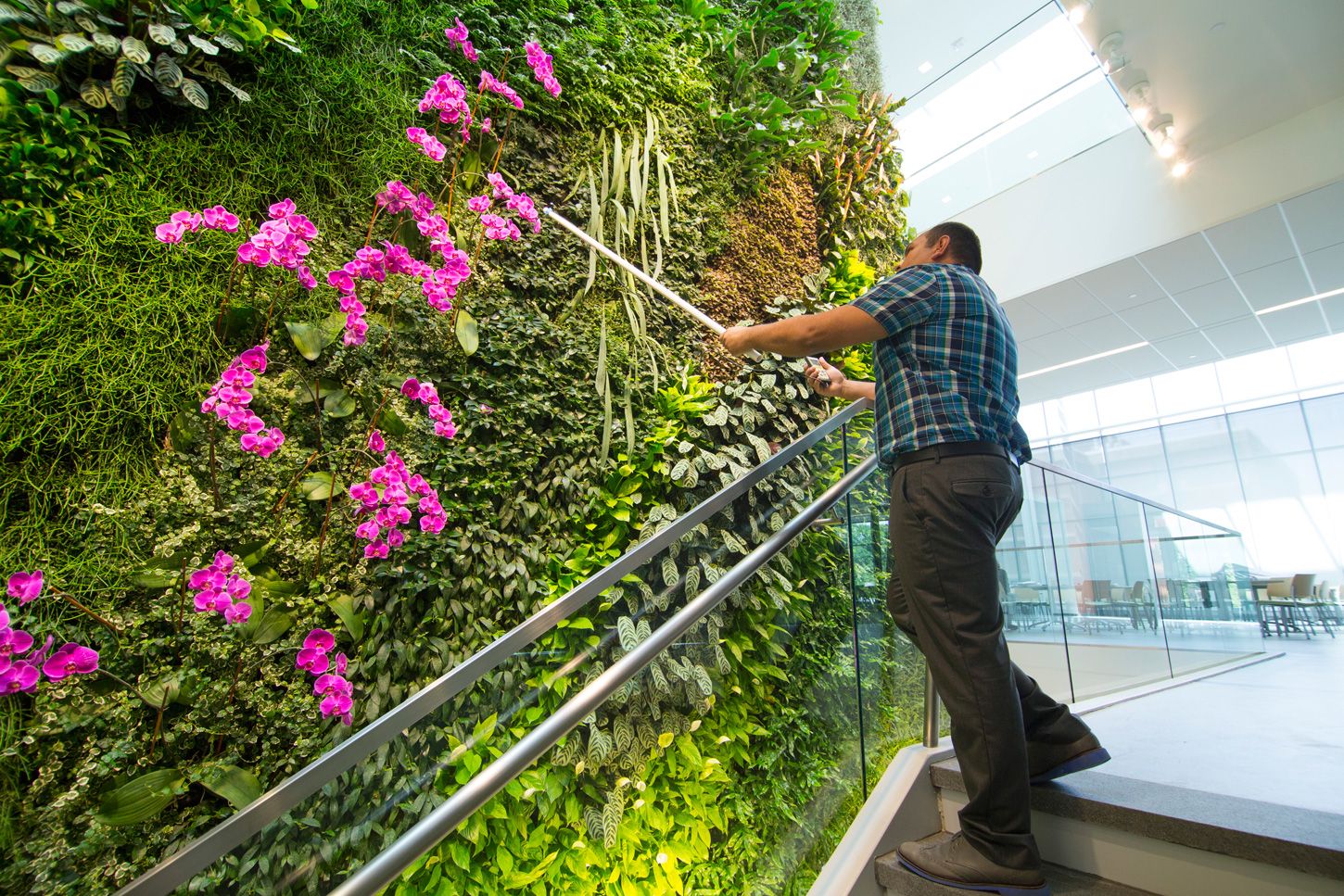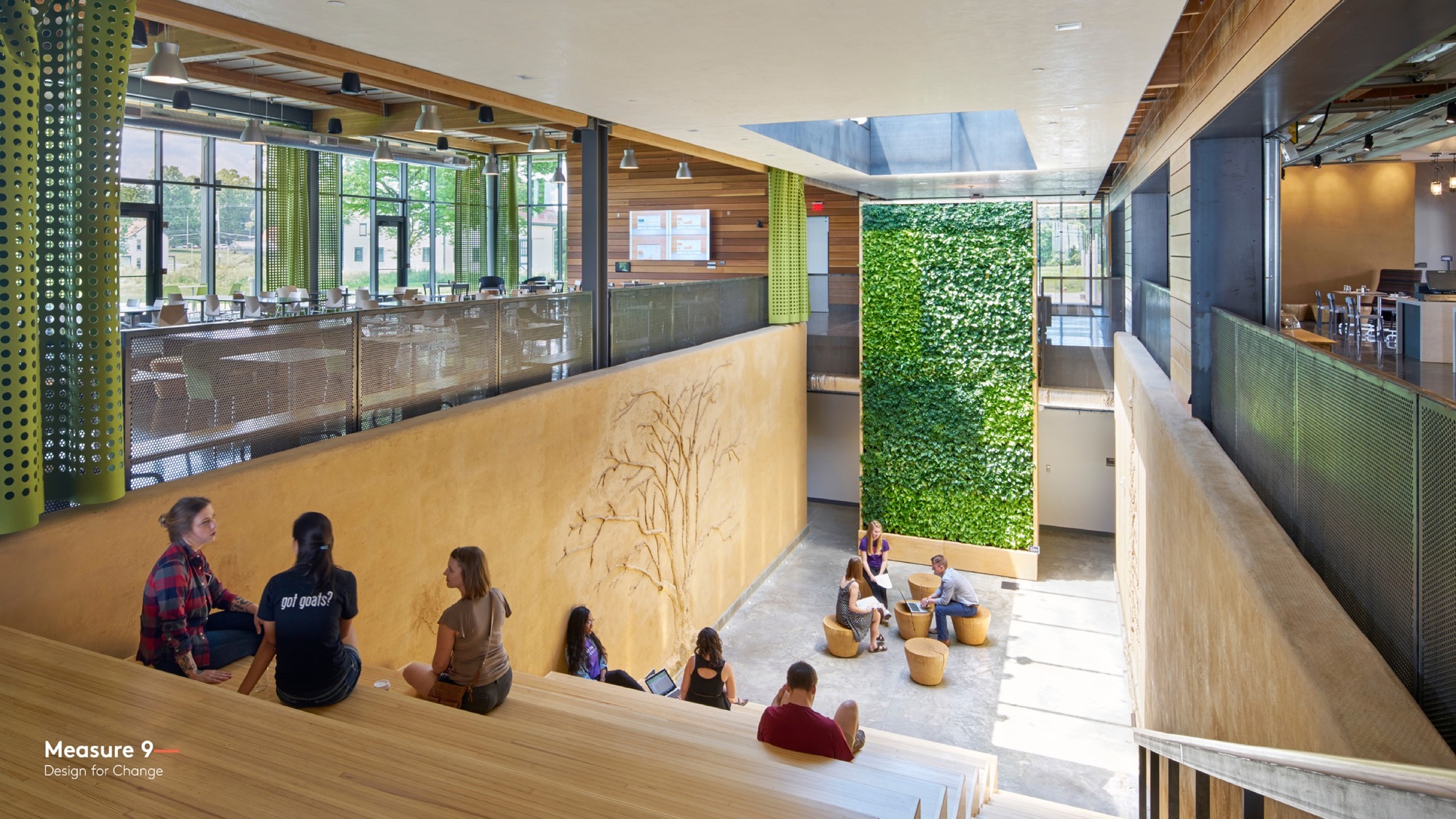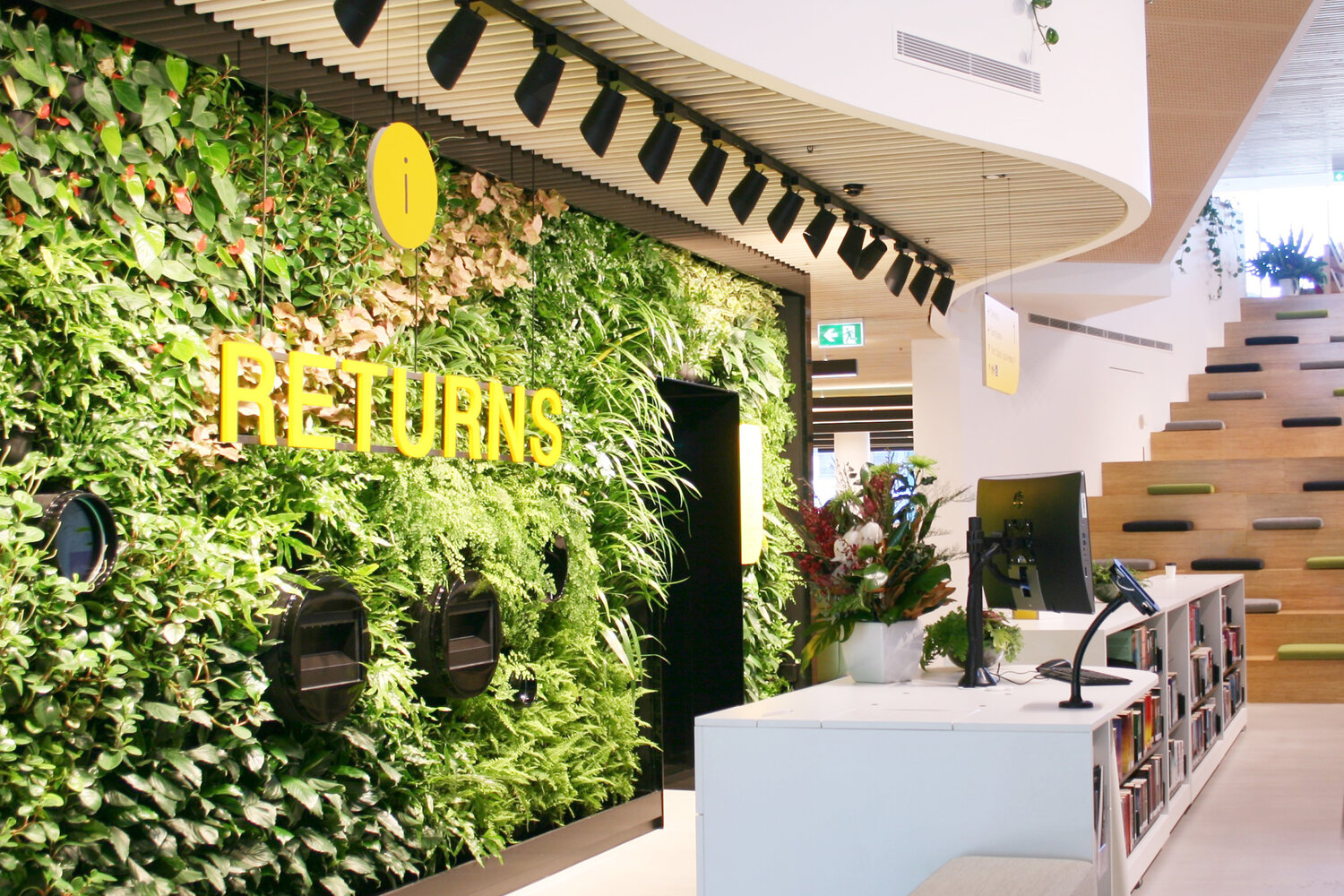A Living Wall for your Library?
Category: #CILIPSGoGreen, News
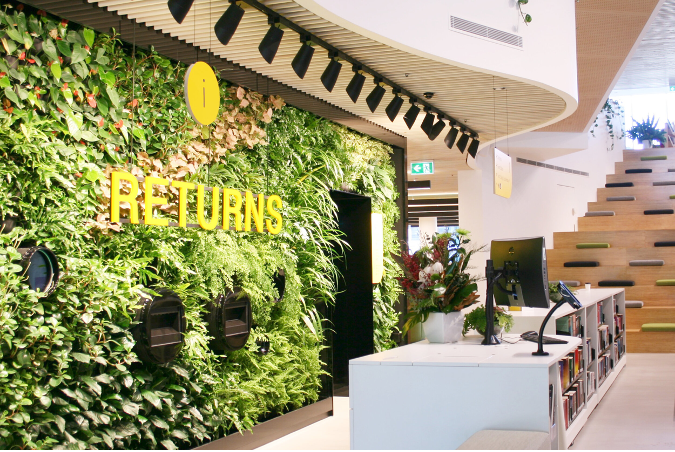
by Alex Jovanovic, Robert Gordon University CILIPS placement student
If you visited the Glasgow Science Centre, you might have noticed the 20m2 of vertical greenery in their ‘Powering the Future’ exhibition. University College Cork Library, which received IFLA’s 2019 green library award, dressed a wall in their 24-hour reading room with living plants. Lancaster University library has recently installed as many as three such structures, one on each floor of their new extension. Further afield, in New York’s Greenwich Village, the focal point of meditation studio MNDFL is a wall of moss, ferns, and lichen.
Green or living walls are a current trend in indoor architecture. But why would you want to set one up inside a library? And what do they have to do with sustainability?
Benefits for library rooms and patrons
Living walls are a sight to behold. Their natural, vibrant colors can liven up any dull library room and make it a more inviting place to spend time in. It is a space-efficient way to modernise a building without significant construction work.
Living walls are not merely decorative, however. They offer a genuine sense of connection to nature, even indoors. In doing so, they provide some of the benefits associated with spending time in natural settings, an activity widely acknowledged to enhance mental and physical health.* A growing body of research highlights the benefits of exposure to these miniature vertical gardens, indicating they improve cognitive function, boost people’s overall mood, and reduce stress levels. They have a way of transforming any area into a more tranquil space. As a nice bonus, their foliage mass absorbs sound, making them perform as noise filters! Ultimately, living walls enhance patrons’ working conditions, and might just contribute a little bit to making people spend more time at the library.
Living walls can be customised to your liking, featuring everything from lush, leafy greens to vibrant flower blossoms. An installation company can help you select plants adequate to your light conditions – some plants, such as fern or ivy, or the colourful Heuchera varieties, can thrive in shadier environments. Different installations are available, not all of them soil-based. Hydroponic systems, for example, transport nutrients mixed in the water directly to the plants’ roots. Even so, these walls usually do not need to be installed next to a building’s water supply, as they can be equipped with a recirculating irrigation system.
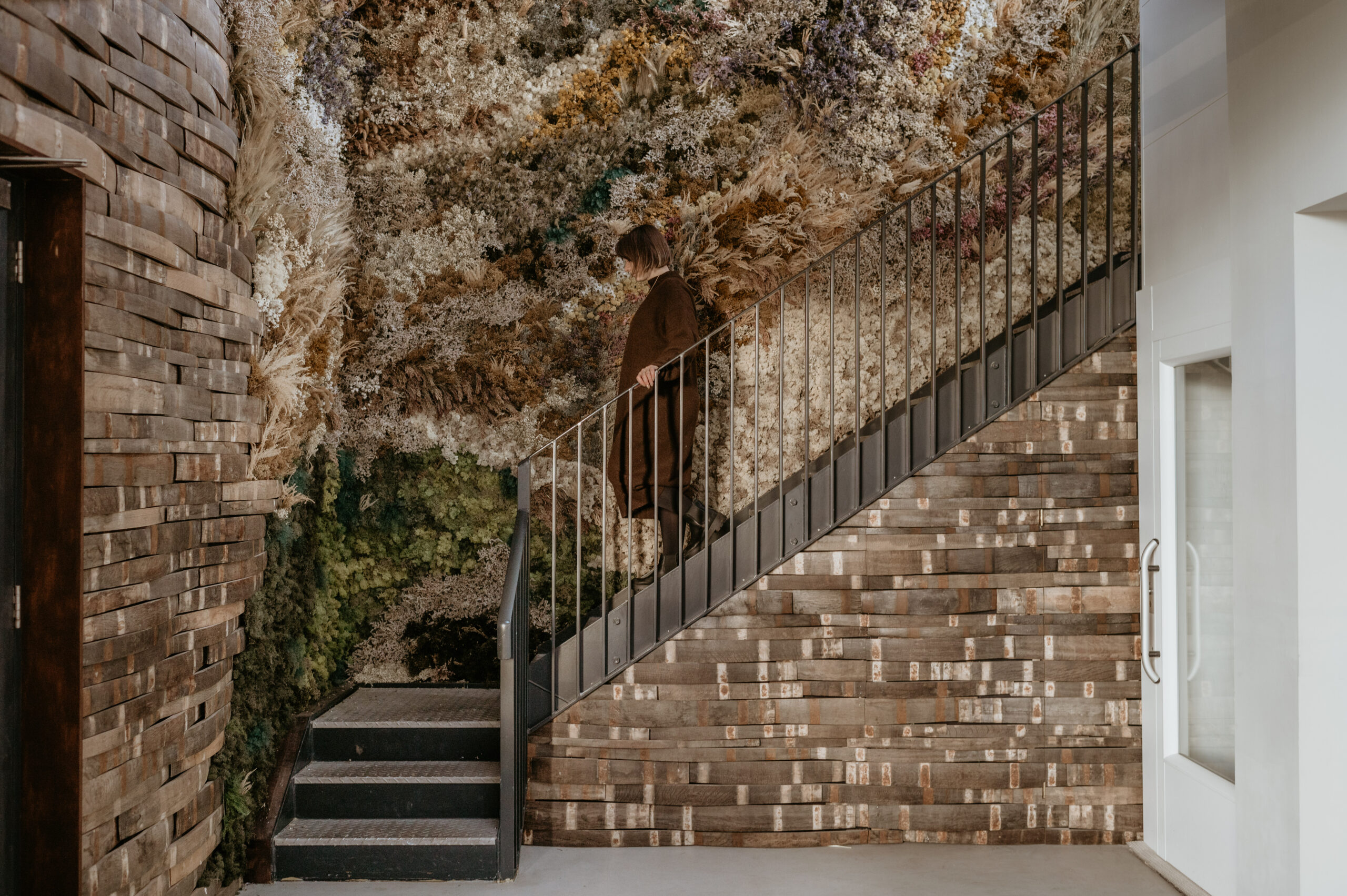
Venturing to Scotland’s Isle of Raasay, you can encounter a different take on plant walls at the local distillery. Its visitor centre features a striking dried floral wall, inspired by the grassy Machair habitats of the Scottish Isles, and the raw materials used in its spirit production. © Gloam
Reducing a library’s carbon footprint
Living walls might have a direct impact on your library’s running costs. This is due to the natural actions of the plants themselves. Like their outdoor counterparts – such as Madrid’s Caixa Forum Museum vertical garden – indoor plant walls act as natural air purifiers, metabolising toxins and releasing oxygen into the air. They can filter out dust particles which may linger in a library’s stacks, and they eliminate bad odours. These benefits could be particularly useful for a library during times of heavy usage, like exam periods, or in libraries with 24/7 opening times.
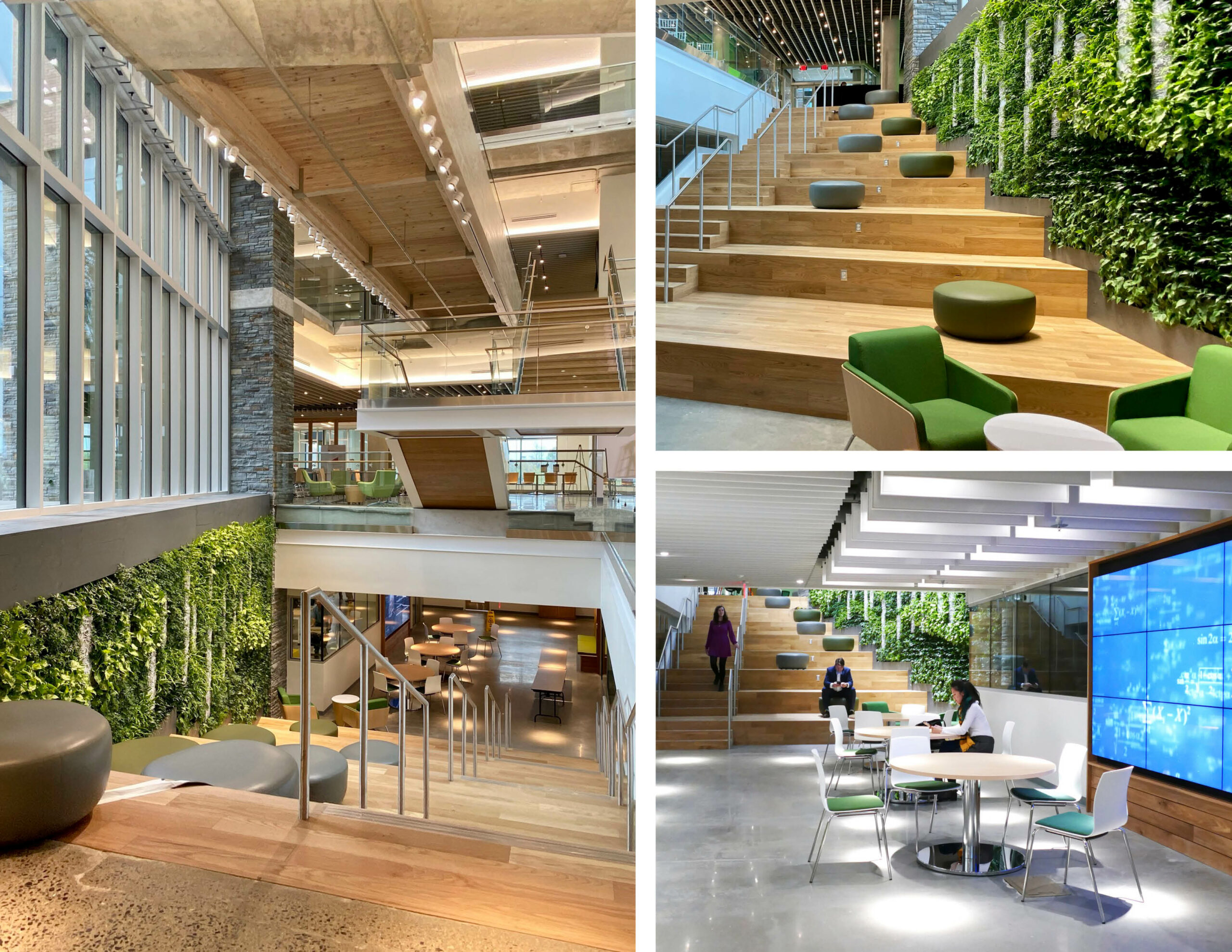
The Universities at Shady Grove’s Biomedical Sciences & Engineering facility, Maryland. © U.S. Green Building Council.
Furthermore, through a process called evapotranspiration, living walls can increase humidity levels in a library, and contribute to cooling the air during warm summer months. For all these reasons, living walls can reduce the workload of a library’s heating, ventilation, and air conditioning (HVAC) systems, lowering the library’s energy usage and costs, and reducing its carbon footprint.
Costs and maintenance
In addition to installation costs, a wall of living plants does necessitate regular maintenance. Most companies offer maintenance schemes and regularly tend to plants, prune or replace them, and check up on nutrients and irrigation systems.
Integration with other green initiatives
Ideally, we recommend installing a living wall in conjunction with other sustainability measures, in order to amplify a library’s environmental commitments. It is worth pointing out that University College Cork funded their living wall directly with money from the library’s energy savings. The features of the wall, including the study of their plants, could be used to educate patrons about vegetation and their role in combatting climate change.
It could become a starting point for ecological education, making patrons more environmentally aware, and encourage individual climate action. As a matter of fact, a living wall could become your library’s green beacon, acting both as a statement, and as a source of inspiration for library users.
The purpose of a living wall inside a library can be manifold. Whether it is installed to enhance interior design, to reduce energy costs and the carbon footprint, or to improve patron wellbeing and productivity, a living wall’s environmental impact cannot be overlooked.
* Even images of nature, Stephen Kellert argues, incorporated within interior design, can be ’emotionally and intellectually satisfying’. Seattle’s public library seems to illustrate this point, by equipping their futuristic interior with stylish plant and vegetation carpets. In Scotland, we particularly appreciate how Haddington Library in the John Gray Centre decorated their shelves with views of the East Lothian landscape. Kellert’s biophilic framework is well worth a read! With the aim of advancing people’s ‘health, fitness and well-being’, it outlines compelling principles by which to incorporate the natural world in the design of buildings and urban environments.
Does your library feature a living wall? CILIPS would love to hear about it!
If you are searching for an installation company, feel free to study the examples mentioned on this page, or drop Alex a line via admin@cilips.org.uk.
Is adopting a living wall with associated environmental activities a financial challenge for you? Launched at our 2023 Annual Conference, the Green Libraries Scotland Grant Fund offers small-scale grants to support libraries in Scotland with projects and activities designed to grow environmental understanding and action. Learn more and apply before 4pm on Friday 7th July.
